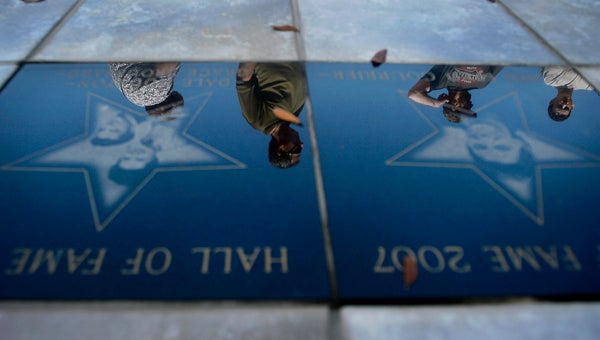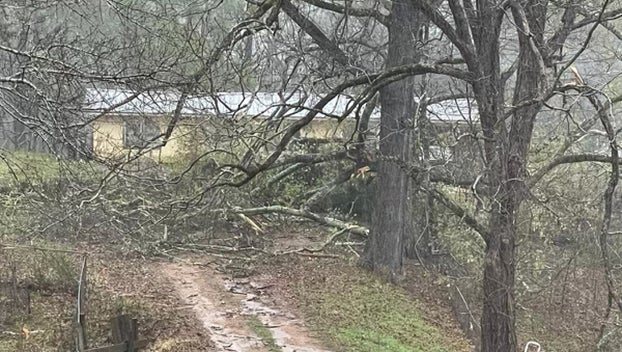Weather kills at least 290
Published 12:00 am Friday, April 29, 2011
PLEASANT GROVE, Ala. (AP) — Firefighters searched one splintered pile after another for survivors Thursday, combing the remains of houses and neighborhoods pulverized by the nation’s deadliest tornado outbreak in almost four decades. At least 290 people were killed across six states — more than two-thirds of them in Alabama, where large cities bore the half-mile-wide scars the twisters left behind.
The death toll from Wednesday’s storms seems out of a bygone era, before Doppler radar and pinpoint satellite forecasts were around to warn communities of severe weather. Residents were told the tornadoes were coming up to 24 minutes ahead of time, but they were just too wide, too powerful and too locked onto populated areas to avoid a horrifying body count.
“These were the most intense super-cell thunderstorms that I think anybody who was out there forecasting has ever seen,” said meteorologist Greg Carbin at the National Weather Service’s Storm Prediction Center in Norman, Okla.
“If you experienced a direct hit from one of these, you’d have to be in a reinforced room, storm shelter or underground” to survive, Carbin said.
The storms seemed to hug the interstate highways as they barreled along like runaway trucks, obliterating neighborhoods or even entire towns from Tuscaloosa to Bristol, Va. One family rode out the disaster in the basement of a funeral home, another by huddling in a tanning bed.
Alabama Gov. Robert Bentley said his state had confirmed 204 deaths. There were 33 deaths in Mississippi, 33 in Tennessee, 14 in Georgia, five in Virginia and one in Kentucky. Hundreds if not thousands of people were injured — nearly 800 in Tuscaloosa alone.
Some of the worst damage was about 50 miles southwest of Pleasant Grove in Tuscaloosa, a city of more than 83,000 that is home to the University of Alabama. The storms destroyed the city’s emergency management center, so the school’s Bryant-Denny Stadium was turned into a makeshift one. School officials said two students were killed, though they did not say how they died. Finals were canceled and commencement was postponed.
The loss of life is the greatest from an outbreak of U.S. tornadoes since April 1974, when the weather service said 315 people were killed by a storm that swept across 13 Southern and Midwestern states.
Brooks said the tornado that struck Tuscaloosa could be an EF5 — the strongest category of tornado, with winds of more than 200 mph — and was at least the second-highest category, an EF4.
Search and rescue teams fanned out to dig through the rubble of devastated communities that bore eerie similarities to the Gulf Coast after Hurricane Katrina in 2005, when town after town lay flattened for nearly 90 miles.
In Phil Campbell, a small town of 1,000 in northwest Alabama where 26 people died, the grocery store, gas stations and medical clinic were destroyed by a tornado that Mayor Jerry Mays estimated was a half-mile wide and traveled some 20 miles.
“We’ve lost everything. Let’s just say it like it is,” Mays said. “I’m afraid we might have some suicides because of this.”
President Obama said he would travel to Alabama on Friday to view storm damage and meet Bentley and affected families. As many as a million homes and businesses there were without power, and Bentley said 2,000 National Guard troops had been activated to help. The governors of Mississippi and Georgia also issued emergency declarations for parts of their states.
“We can’t control when or where a terrible storm may strike, but we can control how we respond to it,” Obama said. “And I want every American who has been affected by this disaster to know that the federal government will do everything we can to help you recover and we will stand with you as you rebuild.”
The storm prediction center said it received 164 tornado reports around the region, but some tornadoes were probably reported multiple times and it could take days to get a final count.
In fact, Brooks said 50 to 60 reports — from the Mississippi-Alabama line, through Tuscaloosa and Birmingham and into Georgia and southwestern Tennessee — might end up being a single tornado. If that’s true its path would be one of the longest on record for a twister, rivaling a 1925 tornado that raged for 219 miles.






